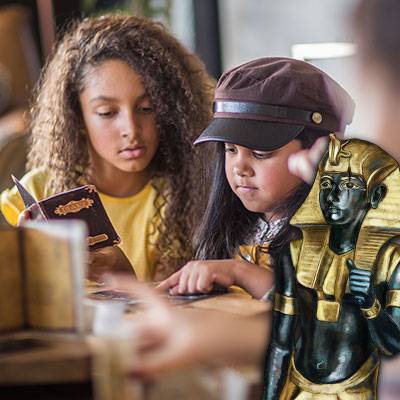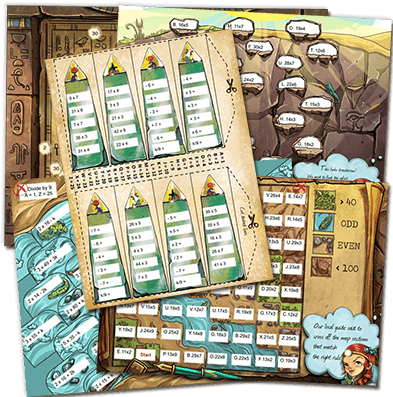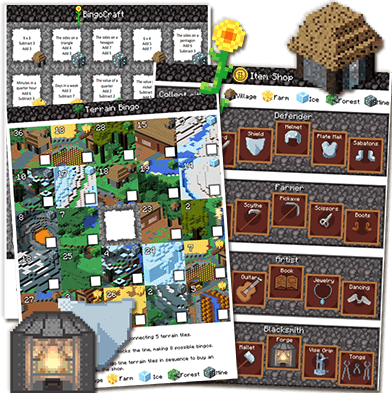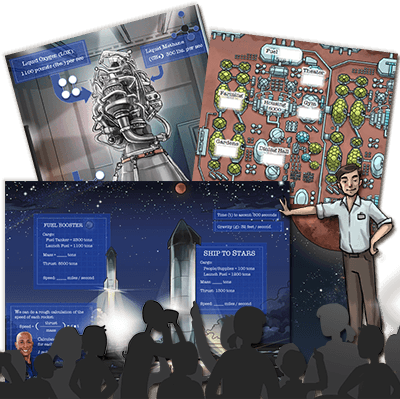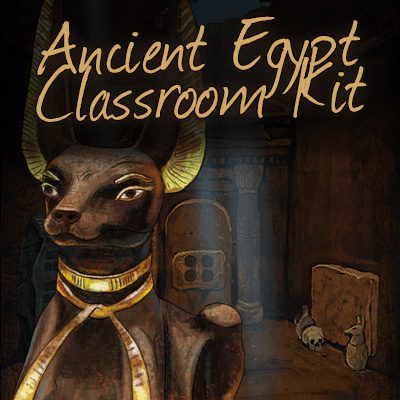Try This With Your Students - The Main Idea Game Pdf
Help your students ENJOY learning to find the main idea and supporting points in key texts. Suited for grades 2-8.

How Does The Main Idea Classroom Activity Work?
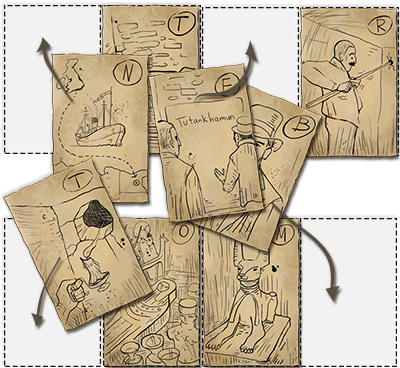
Arrange the story blocks and enter the tomb
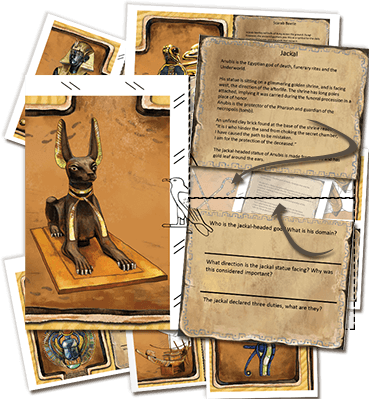
Identify key information and answer questions
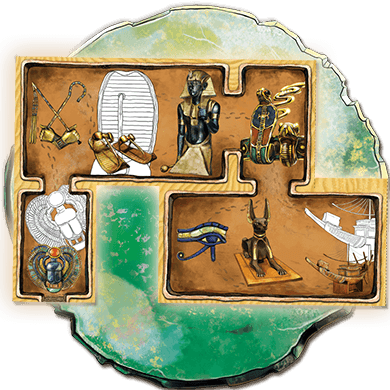
Assemble the tomb and uncover the mystery
What's the Main Idea?

When it comes to important steps in a student's journey towards good reading comprehension, finding the main idea of a paragraph is a giant leap! It's a skill that relies on being able to absorb several pieces of information and figure out how they are connected, and then to explore what conclusion might be the most important one. It can also require evaluating which pieces of information are important, as well as how they're important.
This takes students beyond understanding just what sentences say and into the territory of discovering what they mean when combined as a whole. (this is especially important for kids who are homeschooling!)
They're learning that there's a point in how these thoughts are put together!
Making a Game of It Using the Main Idea Worksheets pdf
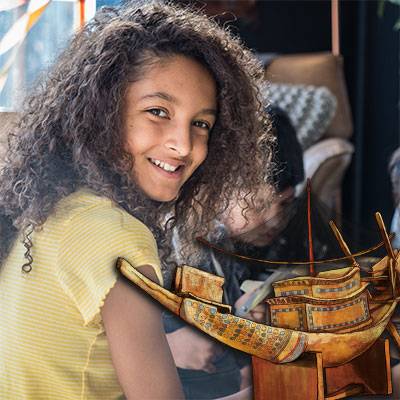
Exploring the main idea in the form of an interactive game can be a great way to introduce students to this concept (especially in a homeschool environment!).
This goes especially for younger students who are just beginning to practice this skill, but turning learning into play helps students learn more naturally at any age.
Having fun with an activity makes the practice its own reward instead of reinforcing the idea that learning something has to be a chore.
Building Your Way Up

'Gamifying' learning is a sure-fire way to keep your kids 100% engaged in your classroom and homeschool lessons.
And it's easy to do - just try out one of our ready-to-play worksheet games here.
Teaching this subject can be tricky - learning it, even more so! Why? Each piece of text could potentially have a wide variety of answers. It's often difficult for kids to find these ideas on their own, especially as more complex texts may only imply the main idea based on subtle clues.
Whether teaching in the classroom, or your kid at home, we often find that it helps to approach it with scaffolding techniques, where you begin with having all of the information on hand and then focus on how to structure the details around the conclusion. Making sure your students have the initial building blocks will let them work their way up to finding the solution on their own.
Your strategies for teaching this skill can be as widely varied as you need them to be. Whether you're identifying topic sentences, grouping words to organize details, or narrowing in through summaries, there are lots of ways for you to help your students get a good grasp on what these main ideas are and how they work.
We're here to help if you're looking for new ways to make sure your students get ongoing practice, and to make sure you have an option to fall back on when you need to keep it fresh and make it stick.
Alternative 1: The Main Idea Raincloud Game

Looking for a free online main idea game instead of an in-depth worksheet activity? We've gotcha covered!
There are several versions of this kind of online educational English game that focus on finding the main idea.
Our favorite that we want to share with you is the Rain Cloud game, which can be found here! This game is perfect for mixing up your homeschool approach, or a fun classroom activity.
How to play:
The Rain Cloud game is set up to allow students to determine the primary piece of information from a set of options. The concept and controls are very simple: follow the link to the game page and select between the mouse or touchscreen options to get started. A hovering rain cloud containing a couple of sentences will appear over three trees, which each present a possible conclusion. Here's an example:
The rain cloud says 'Plants need sunlight to make their own food. Rabbits eat plants in order to get energy. Some animals need to eat other animals to survive.'
- The first tree at the bottom says 'Rabbits eat plants.'
- The second says 'Some animals are dangerous.'
- The third says 'Living things need energy.'
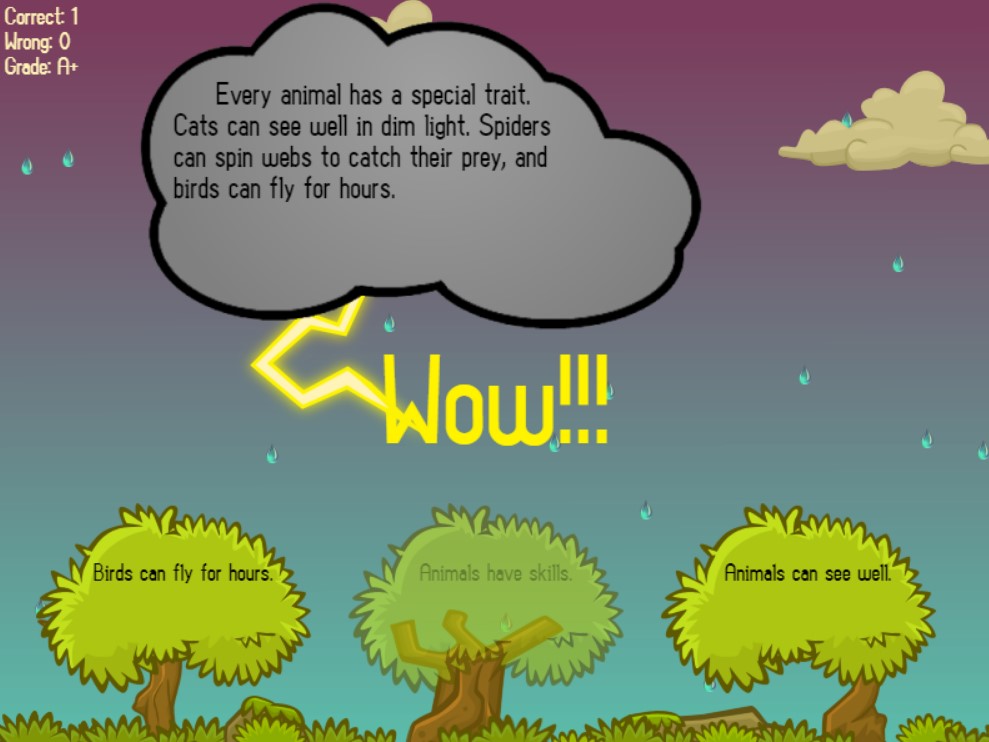

This provides a set of options where one is based on an existing information sentence, another is a possible conclusion based on a different piece of information, and the third is a fact based on all three of the given sentences. This kind of set-up gives the kids a chance to distinguish between options that are somewhat relevant from the ones that actually capture the idea as a whole.
Using the mouse to hover over and click the tree or swiping down the screen from the cloud will strike it with a bolt of lightning. A message like 'You Got It!' or 'Nope, Try Again!' will appear to indicate whether or not it was the correct one. (This can be fun for kids, but some of them may be scared by the thunder sounds or spooky music, so you can decide if this is a good fit for younger or more sensitive students. You can also make sure they know how to adjust the computer's volume on their own so they can play more comfortably.)
The game is based on gaining points, and the score will either increase or decrease as the players choose correct or incorrect options. This allows the kids to learn through process of elimination. If they get an answer wrong, the question stays up so they can keep trying until they get the correct one, and then move on to the next set.
Alternative 2: Main Idea Millionaire

This game allows kids to play a main idea version of "Who Wants to Be a Millionaire?" It even lets them use powers to make the questions easier. This game has a paragraph with four sentences in it and you have to pick the one that doesn't belong. This continues until you get one wrong or until you win the game.
This game will allow kids to identify the main point of the sentence and then figure out which sentence doesn't fit into that main point.
Why Should I Use Online Games In the Classroom?

We like this concept because it's interactive and striking — literally! It's colorful and atmospheric enough to be appealing while still simple enough that it doesn't overwhelm the learning process. The multiple-choice approach gives kids a chance to evaluate different possibilities and build a frame of reference for the kind of information that might be important. They learn how the individual sentences contribute to the big picture in different ways, how some information might seem distracting at first glance, and how the conclusion shows the way each part connects to the other. This builds students' abilities to evaluate situations where all the options might be feasible, and to prioritize which one is more important.
Additionally, younger students may not be ready to come up with conclusions without some kind of prompting, so getting the chance to decide between a few and having the choice reinforced helps them build confidence as they work their way up. This is a great example of the scaffolding technique we mentioned earlier, where the final possibility is present and their job is to identify it. They're going to be honing this skill as it continues to show up no matter what grade or stage of life they're in, but learning to provide that answer on their own comes with time and practice through games like this.
We also think this game works well because it isn't set up to win or lose: the questions are ongoing, and while players can get answers wrong, that doesn't end the game or set back their progress. Games that send you back to the beginning when you get something wrong can risk creating feelings of frustration and apathy — the opposite feelings of what we want our students to associate with learning activities! This game allows them to continue trying until they find the correct answer, and this set-up also enables them to put together patterns for the kinds of ideas they're looking for. They learn to distinguish merely plausible answers from the ones that really capture the essence of the information.
The way the game provides feedback, progression, and the opportunity for persistence will strengthen their learning habits by building up their frame of reference in ways that they can apply to more complex ideas in the future. Not only that, it makes them less likely to become frustrated by failure and simply give up — not just in the game, but in life and learning later on.

Keep it For a Rainy Day

This kind of English game can make for a great activity to follow up a lesson on the subject, or for students to do at home after going over some examples in class together. You can assign them a set number of questions or give them a certain amount of time to complete as many as they can. Keeping track of scores might help you evaluate their progress as they become more familiar with the concept, but the important thing is that they get the chance to practice, build their patterns, and become comfortable with the skill.
You can also encourage them to compare notes with each other or talk as a class about which questions tripped them up and how they decided on the answers they chose. If students are dissatisfied with the designated correct answers, don't be afraid to let them voice those feelings! The game can be a jumping-off point for further discussions about why it might have been correct, or whether they could come up with a better one, instead of making them feel like they have to take the exercise at face value. If they're engaged and asking questions about the process, that's a good sign that they're getting something out of it.
Baby Steps Will Take You Far

Ultimately, we want to make sure our students come away with valuable skills in analyzing what they read, evaluating its intended effect, and making thoughtful judgments about its meaning.
This kind of critical thinking will help them go a long way as they navigate through life. We hope they enjoy the game, and that you all find this important lesson fun and worthwhile!
Thanks for stopping in with us today!
Main Idea Details
Key Ideas and Details - Literature and Informational Text
CCSS.ELA-Literacy.RL.1.1
Ask and answer questions about key details in a text.
CCSS.ELA-Literacy.RI.1.2
Identify the main topic and retell key details of a text.
CCSS.ELA-Literacy.RL.2.1
Ask and answer such questions as who, what, where, when, why, and how to demonstrate understanding of key details in a text.
CCSS.ELA-Literacy.RI.2.2
Identify the main topic of a multiparagraph text as well as the focus of specific paragraphs within the text.
CCSS.ELA-Literacy.RL.3.1
Ask and answer questions to demonstrate understanding of a text, referring explicitly to the text as the basis for the answers.
CCSS.ELA-Literacy.RI.3.2
Determine the main idea of a text; recount the key details and explain how they support the main idea.
